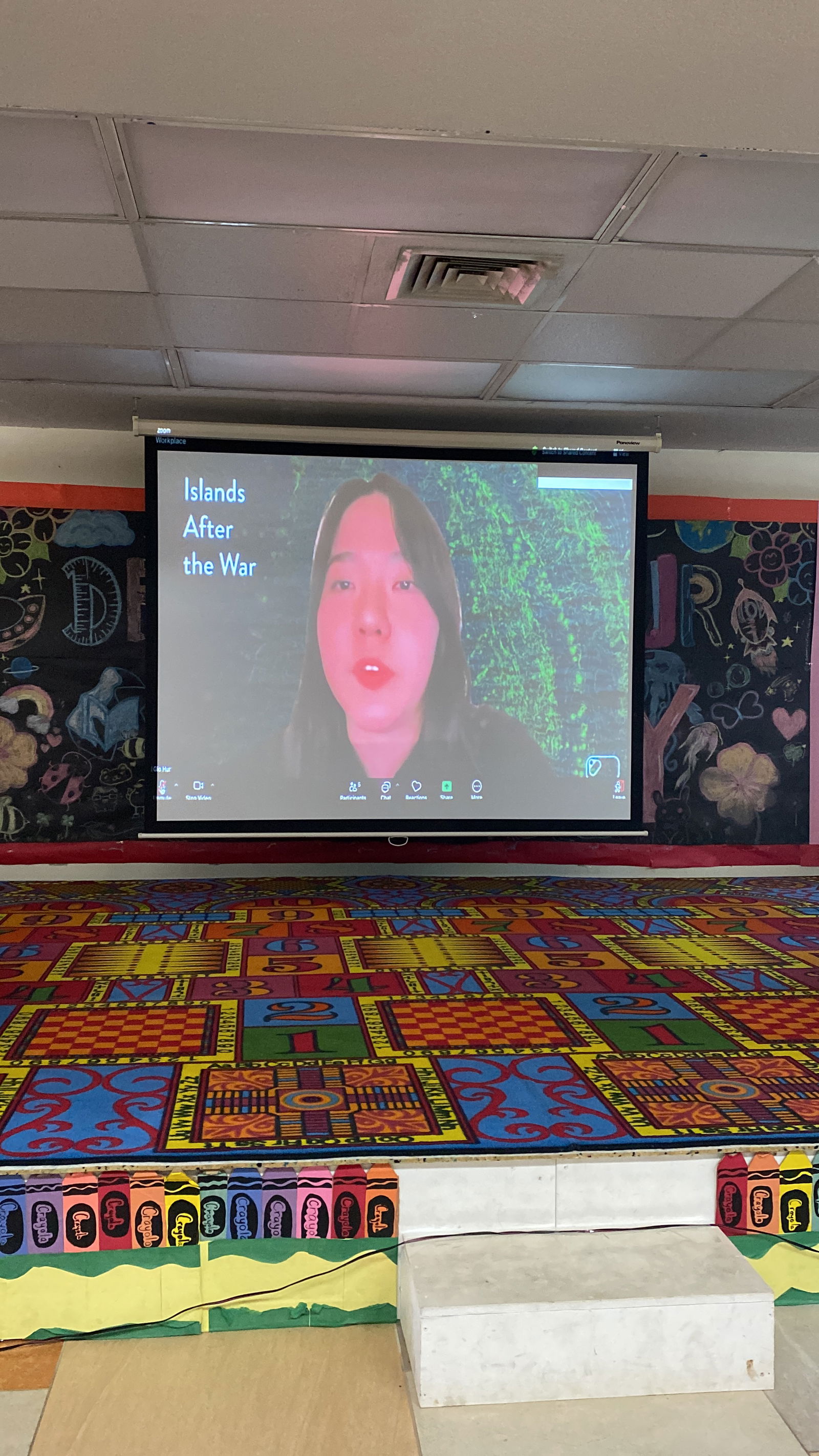DOZENS of island residents attended the book launch of “Islands After the War” at Joeten-Kiyu Public Library on Aug. 16.
The book presents a comparative study of wartime sites in Okinawa, Iejima, Saipan, and Tinian. Authored by Gio Hur, Emily Kim, Hannah Hardenbergh and Carlo Raimondo — recent graduates of the Harvard Graduate School of Design with Master of Landscape Architecture degrees — the team presented virtually and took questions from residents. Hur is also an alumna of Saipan International School and grew up on Saipan.
“Islands After the War” compares four sites in Okinawa and Iejima with four sites on Saipan and Tinian. It features photos, sketches, 3D scans and the team’s observations. The four comparisons include the former Japanese Navy Underground Headquarters in Okinawa with Saipan’s Last Command Post, Shuri Castle with the local Japanese jail, Niya-Thiya Cave in Iejima with Dump Cove on Tinian, and Iejima Auxiliary Airfield with Tinian’s North Field.
In their presentation, the authors wrote that they used landscape as a lens to “examine the enduring effects of the Pacific Theater on the islands of the Pacific.” They defined landscape as “not merely a physical environment” but also a “cultural product…shaped by, and reflective of, collective memory, power, identity, and belonging.”
In the book’s preface, Hur notes that each location has a complex, layered history. A grant from the Harvard Asia Center encouraged the team to take a comparative approach, exploring how “cultural and wartime artifacts are preserved, how colonialism has shaped access to land, and how the memory of these events continues to impact communities.”
During the Q&A, Hur said leaving Saipan prompted her to reflect on why war remnants were located where they are. “Like many island residents, I grew up swimming near Sherman tanks in the Saipan Lagoon and near other war sites,” she said. “It wasn’t until I left Saipan that I began questioning the events that led to these remnants being where they are. Studying landscape architecture at Berkeley and Harvard helped me realize how special and layered our history is in Saipan, Tinian, and across the Pacific islands affected by the war.”
Co-author Hardenbergh said the team selected sites with “cultural weight” that were sometimes different and sometimes unexpectedly similar. She highlighted Shuri Castle and the Japanese jail as examples, noting that while both existed in urban contexts, the nuances of their comparison emerged through firsthand observation, photographs, and sketches.
The project was partially funded by the Northern Marianas Humanities Council. An e-copy of the book is available at http://nmhcouncil.org/.

Island residents attend the book launch of “Islands After the War” at Joeten-Kiyu Public Library on Saturday, Aug. 16, 2025.

Gio Hur presents virtually at the launch of “Islands After the War” at Joeten-Kiyu Public Library on Saturday, Aug. 16, 2025.

The book “Islands After the War” is a comparison of war sites in Okinawa and the CNMI.










